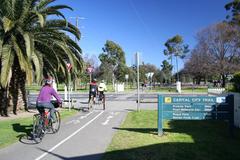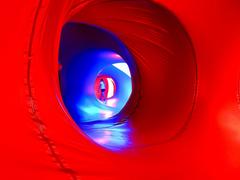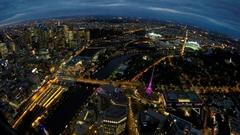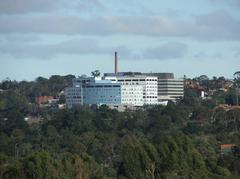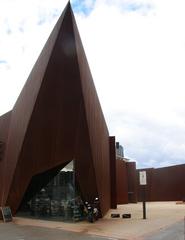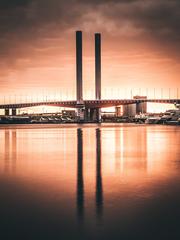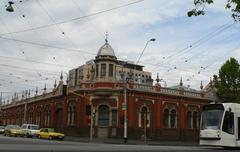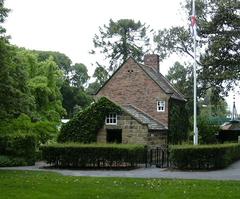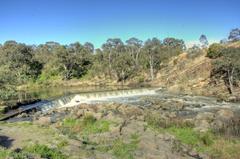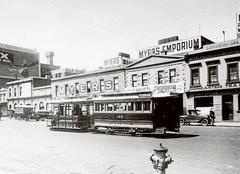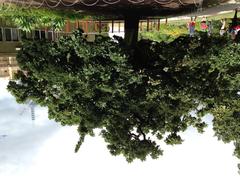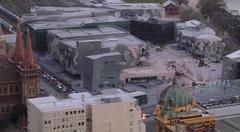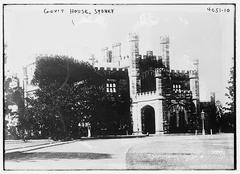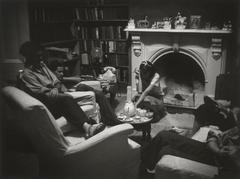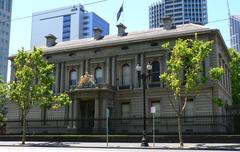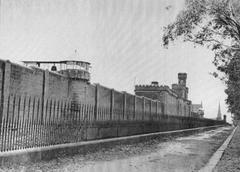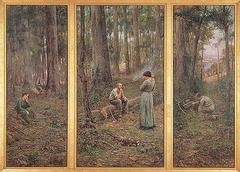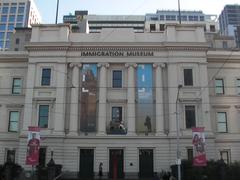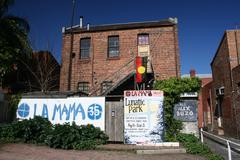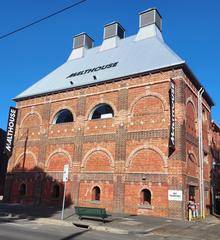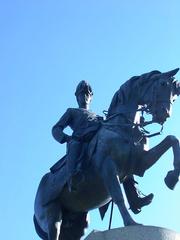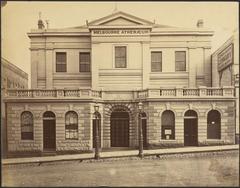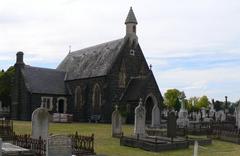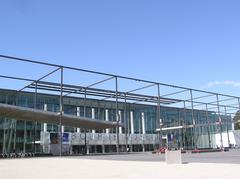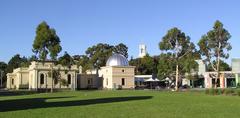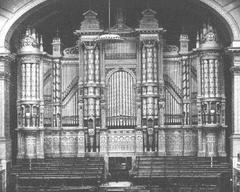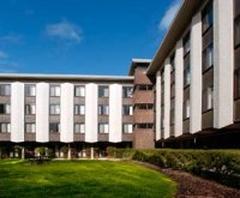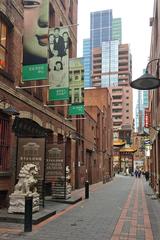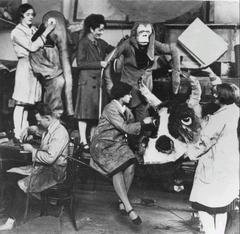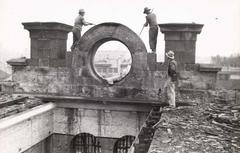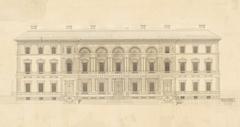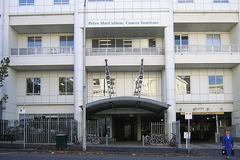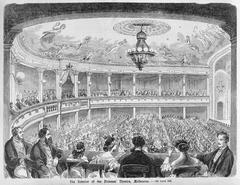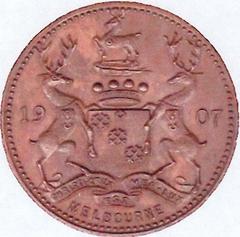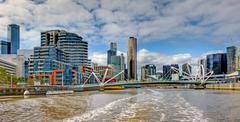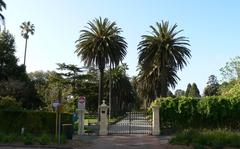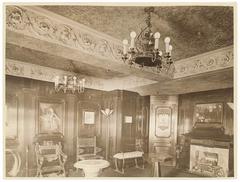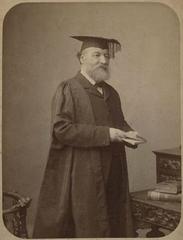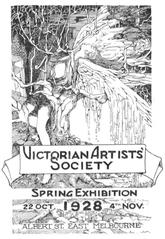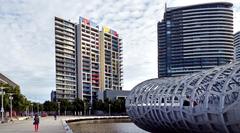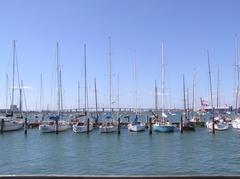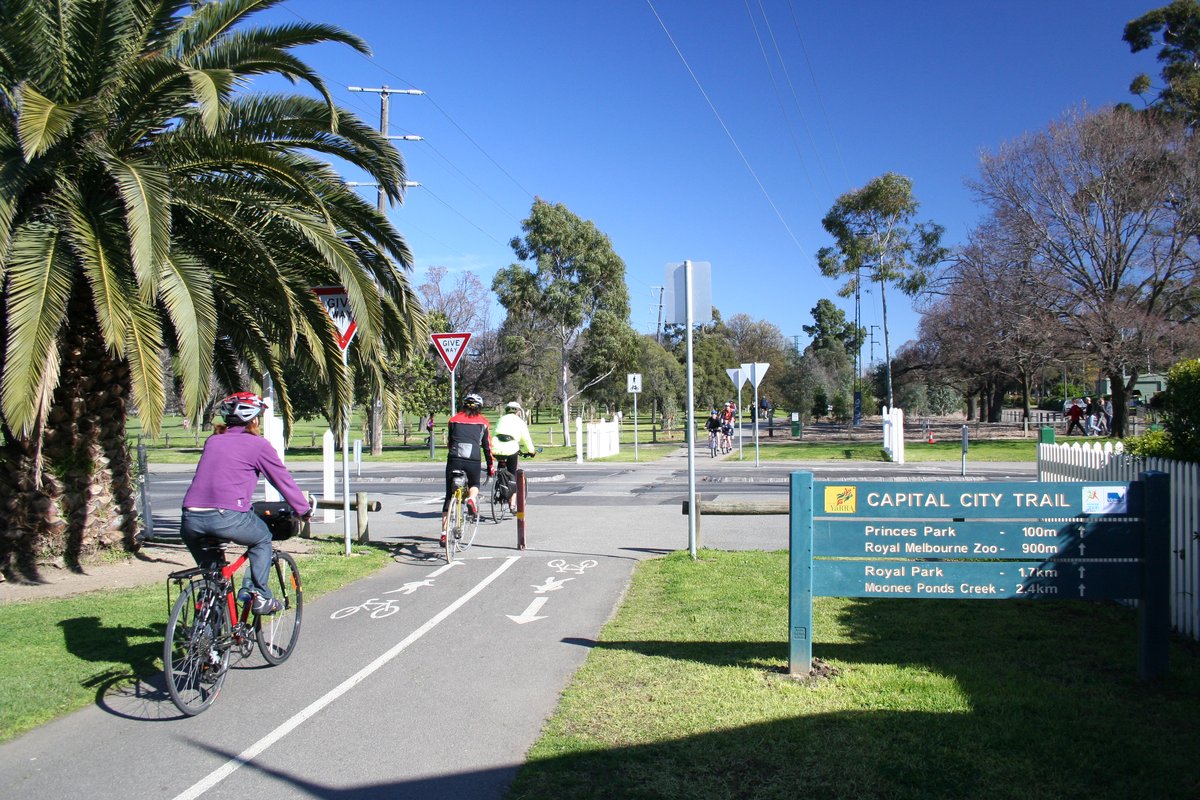
Capital City Trail Melbourne: Visiting Hours, Tickets, and Historical Sites Guide
Date: 15/06/2025
Introduction
Melbourne’s Capital City Trail is a renowned 29–30 km urban loop that offers a dynamic journey through the city’s Indigenous heritage, colonial history, multicultural neighborhoods, and lush natural landscapes. Fully paved and predominantly flat, the trail encircles central Melbourne, linking significant historical landmarks, green spaces, and cultural precincts. Designed for cyclists, walkers, and runners of all abilities, it invites both locals and visitors to experience Melbourne’s vibrant city life alongside tranquil parklands and waterways.
The trail follows the Yarra River (Birrarung), a site of deep spiritual and cultural significance for the Wurundjeri Woi-wurrung and Bunurong/Boon Wurrung peoples of the Kulin Nation (City of Melbourne). Interpretive signage and Indigenous art along the route recognize these enduring connections, providing visitors with meaningful insight into Melbourne’s foundation on Wurundjeri Country.
As a centerpiece of Melbourne’s sustainable transport strategy, the Capital City Trail seamlessly connects existing paths like the Merri Creek Trail, Main Yarra Trail, and Moonee Ponds Creek Trail, forming a continuous loop that encourages active lifestyles while reducing car dependency (Wikipedia). The route passes over 25 heritage-listed sites, including the Royal Botanic Gardens, UNESCO-listed Royal Exhibition Building, and historic bridges such as Morell Bridge. These sites collectively showcase the city’s layered narrative from Indigenous custodianship to European settlement and modern urban development.
The trail also provides access to diverse experiences, from the multicultural precincts of Fitzroy, Carlton, Richmond, and Docklands to serene reserves like Yarra Bend Park and Royal Park, which support urban biodiversity and recreation. Amenities such as drinking fountains, bike repair stations, and accessible pathways ensure convenience and inclusivity, while excellent public transport connections make the trail easily reachable (Bicycle Network).
For those seeking historical exploration, cultural immersion, environmental appreciation, or simply an active day out, the Capital City Trail offers a comprehensive, free, and accessible way to experience the heart of Melbourne. To plan your visit, use official resources and interactive apps like Audiala for maps, tips, and event updates (City of Melbourne).
Table of Contents
- Introduction
- Indigenous Heritage and Pre-European Significance
- European Settlement and Urban Development
- The Evolution of the Capital City Trail
- Heritage Sites and Cultural Landmarks
- Social and Multicultural Significance
- Environmental and Recreational Importance
- Visitor Information
- Preservation and Ongoing Development
- Visitor Experience and Interpretation
- Frequently Asked Questions (FAQ)
- Conclusion
- Useful Links
- Call to Action
Indigenous Heritage and Pre-European Significance
The lands traversed by the Capital City Trail are deeply significant to the Wurundjeri Woi-wurrung and Bunurong/Boon Wurrung peoples of the Kulin Nation. The Yarra River (Birrarung) was a vital resource, trade route, and gathering place for thousands of generations (City of Melbourne). Today, interpretive signage and art along the trail honor this heritage, reflecting ancient pathways and enduring cultural traditions.
European Settlement and Urban Development
European settlement began in 1835, rapidly transforming the land into a colonial city (City of Melbourne). The trail now overlays this layered history, passing through neighborhoods and parklands that witnessed Melbourne’s growth from a settlement to a global metropolis. Heritage-listed sites such as the Royal Botanic Gardens and Carlton Gardens highlight the city’s development and commitment to green spaces.
The Evolution of the Capital City Trail
The Capital City Trail was developed to enhance sustainable transport and urban connectivity, integrating existing trails into a continuous loop (Wikipedia). Supported by government initiatives, it fosters active lifestyles and reduces reliance on private vehicles.
Heritage Sites and Cultural Landmarks
The trail showcases more than 25 Victorian Heritage Register sites, including:
- Royal Botanic Gardens: Established in 1846, these gardens are a testament to Melbourne’s horticultural legacy.
- Carlton Gardens and Royal Exhibition Building: A UNESCO World Heritage site, the Exhibition Building hosted Australia’s first Parliament in 1901.
- Morell Bridge: Built in 1899, this historic bridge is a notable engineering feat.
- Aboriginal Heritage Sites: Signage and memorials acknowledge the city’s First Nations history.
Social and Multicultural Significance
The trail reflects Melbourne’s multicultural character, passing through neighborhoods like Carlton, Fitzroy, Richmond, and Docklands—each known for their distinct communities, public art, and festivals (City of Melbourne). The trail is a modern gathering place, supporting events and daily social interactions.
Environmental and Recreational Importance
The trail connects Melbourne’s extensive green spaces, offering habitats for native flora and fauna and supporting environmental education. Thousands use the trail daily for cycling, running, and walking. Sustainability programs promote habitat restoration and eco-friendly transport.
Visitor Information
Visiting Hours
The Capital City Trail is open 24/7, year-round. Daylight hours are recommended for safety and enjoyment.
Tickets and Access
The trail is free to use; no tickets or permits are required. Individual attractions along the route (e.g., Melbourne Zoo) may have specific hours and entry fees.
Accessibility
The trail is mostly flat and paved, suitable for all ages and abilities, including wheelchair users. The Gipps Street stairs in Abbotsford are a known exception—check local maps for accessible detours.
Getting There
Multiple public transport options—including trains, trams, and buses—provide access to the trail at locations such as Federation Square, Royal Botanic Gardens, and Docklands (Public Transport Victoria).
Guided Tours and Events
Local organizations offer guided cycling and walking tours. Community events, such as festivals and fun runs, regularly utilize the trail.
Photographic Spots
Highlights include the Southbank skyline, Yarra Bend Park, Dights Falls, Royal Exhibition Building, and Docklands waterfront.
Preservation and Ongoing Development
The City of Melbourne’s Heritage Strategy ensures the protection of historic sites while promoting accessibility and sustainable growth (City of Melbourne Heritage Strategy). Grants and community engagement underpin ongoing improvements.
Visitor Experience and Interpretation
Interpretive signage, public art, and installations like the Federation Bells enrich the trail, sharing stories of Indigenous custodianship, early settlers, and Melbourne’s multicultural evolution.
Frequently Asked Questions (FAQ)
Q: Is there a fee to use the Capital City Trail?
A: No, it is free and open to the public.
Q: What are the best times to visit?
A: Daylight hours, especially in spring and autumn.
Q: Is the trail family-friendly?
A: Yes, it is suitable for all ages and abilities.
Q: Can I bring my dog?
A: Dogs are allowed on leash in most sections; check local signage.
Q: Where can I find maps?
A: Official maps are available on the City of Melbourne website and at visitor centers.
Conclusion
The Capital City Trail offers a unique way to experience Melbourne’s heritage, culture, and natural beauty. Whether exploring historic landmarks, enjoying green spaces, or immersing in diverse neighborhoods, the trail is accessible, free, and enriching. Plan your journey, use official resources, and embrace the stories and landscapes that define Melbourne.
Useful Links
- Official Capital City Trail Map and Information
- City of Melbourne Heritage Strategy
- Public Transport Victoria
- Melbourne Cycle Loops
- Bicycle Network
- Melbourne Point
- Streets Alive Yarra – Capital City Trail
- Trek Zone – Capital City Trail Melbourne
- Time Out Melbourne – Things to Do in June
Call to Action
Enhance your Capital City Trail adventure by downloading the Audiala app for interactive maps, audio tours, and real-time updates. Follow us on social media to stay updated on events, new trails, and Melbourne’s rich cultural offerings.
References
- City of Melbourne – Melbourne’s History and Heritage
- Wikipedia – Capital City Trail
- Bicycle Network – Melbourne’s Top Family Friendly Bike Trails
- Melbourne Point – Capital City Trail
- Streets Alive Yarra – Capital City Trail
- City of Melbourne – Capital City Trail
- Melbourne Cycle Loops
- Public Transport Victoria
- Trek Zone – Capital City Trail Melbourne
- Time Out Melbourne – Things to Do in June
